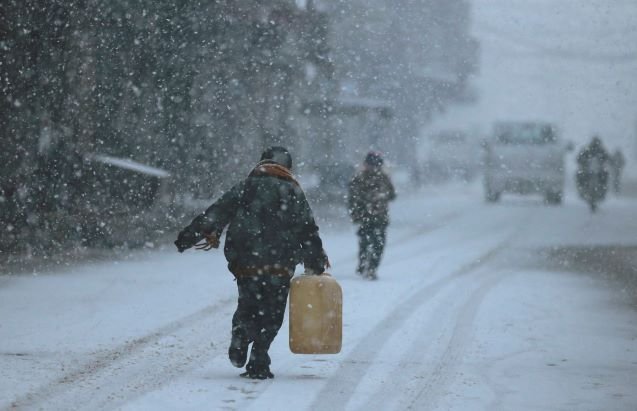
Left out in the cold
KNOCK-ON EFFECTS OF FUEL SHORTAGES IN GOVERNMENT-HELD SYRIA
November 2022
Introduction
Communities in Syrian government-held areas are in the midst of a prolonged fuel crisis. Taking into account the current domestic economic dysfunction as well as global commodity market volatility, a solution to satisfy Syria’s demand for basic fuel derivatives appears unlikely. With the onset of winter, government officials have been uncharacteristically candid; several have admitted that shortages appear chronic and would continue for the foreseeable future. The Syrian minister of Petroleum and Mineral Resources, Bassam Tohmeh, attributed the crisis to a number of factors, including low domestic oil production, saying it was because of these that they would be unable to resolve issues in the short term. A manager at the Syrian Fuel Storage and Distribution Company (SADCOB) reiterated this, saying that as long as Damascus did not control the oilfields, the government would have to continue attempts to import fuel, a supply chain which has been unstable and prone to sanctions-related complications.
The fuel crisis is part of a steep economic decline in government-held areas (as explored by the Humanitarian Access Team (HAT) in a September 2022 situation report). Scarce government resources and systematic corruption, persistent sanctions and external geopolitical developments (of which the Russian-Ukrainian conflict stands out), have severely limited the government’s capacity to import essential commodities, and fuel products. The reactivation of a credit line agreement with Iran in May 2022 has yet to produce a noticeable improvement in fuel imports despite the arrival of more than five oil shipments to date; the scarcity and unaffordability of fuel products have put further pressure on local livelihoods, increasing commercial and industrial production costs, undermining the water and power supply, paralyzing the transportation sector, and threatening the functionality of the education and healthcare sectors.
With winter approaching, the complexity and severity of the fuel crisis is likely to increase as fuel products, specifically diesel, constitute the primary source of heating for the majority of families across government-held areas. With fuel shortages projected to last throughout winter, many families will suffer. Many will struggle to secure and afford sufficient amounts of fuel, particularly diesel, used for heating.
This report tackles the anticipated heating crisis in government-held areas by first analyzing government diesel allocation deliveries and assessing their sufficiency and efficiency, in addition to the price of diesel on the black market, and its affordability amid the ongoing fuel shortages. It then provides winterization needs assessment, conducted by HAT using secondary quantitative data sources, which identifies the most vulnerable communities to help guide winterization programming in government-held areas. With households struggling to source diesel, some have turned to alternative methods for heating – presented here are alternative fuels used for heating, in terms of their benefits and costs. Another mechanism used by households, particularly in forested areas, is increasingly to use firewood for fuel: although this is not new, the logging industry appears to have expanded in recent years, with deforestation threatening the land, and the resource’s scarcity acting as a potential driver of conflict (as shown in a study of As-Sweida governorate).
Methodology
The findings of this report were achieved through mixed research methods. For qualitative research, HAT relied on data from media and social media outlets, official statements and updates by the concerned government entities, and anecdotal evidence from key informant interviews. The HAT also conducted a quantitative analysis of the dynamics of heating diesel affordability, shelter need, and NFI need that informed a composite indicator that identified communities vulnerable to colder temperatures. Satellite imagery analysis was used to measure the level of forest cover in As-Sweida and Quneitra governorates and calculate forest cover dynamics between September 2019 and 2022.

